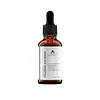What's inside
What's inside
 Key Ingredients
Key Ingredients

 Benefits
Benefits

 Concerns
Concerns

No concerns
 Ingredients Side-by-side
Ingredients Side-by-side

Water
Skin ConditioningDipropylene Glycol
HumectantHydrogenated Polydecene
EmollientPhenyl Trimethicone
Skin ConditioningGlycerin
Humectant1,2-Hexanediol
Skin ConditioningNiacinamide
SmoothingCaprylic/Capric Triglyceride
MaskingGlyceryl Stearate
EmollientCeramide As
Skin ConditioningCeramide AP
Skin ConditioningCeramide Ns
Skin ConditioningCeramide NP
Skin ConditioningCentella Asiatica Extract
CleansingCentella Asiatica Root Extract
Skin ConditioningCentella Asiatica Leaf Extract
Skin ConditioningMadecassoside
AntioxidantMadecassic Acid
Skin ConditioningAsiaticoside
AntioxidantAsiatic Acid
Skin ConditioningSodium Hyaluronate
HumectantHyaluronic Acid
HumectantSodium Acetylated Hyaluronate
HumectantSodium Hyaluronate Crosspolymer
HumectantPotassium Hyaluronate
Skin ConditioningHydroxypropyltrimonium Hyaluronate
Hydrolyzed Sodium Hyaluronate
Skin ConditioningHydrolyzed Hyaluronic Acid
HumectantCopper Tripeptide-1
Skin ConditioningTripeptide-1
Skin ConditioningPalmitoyl Tripeptide-1
Skin ConditioningPalmitoyl Pentapeptide-4
Skin ConditioningHexapeptide-11
Skin ConditioningHexapeptide-9
Skin ConditioningAcetyl Hexapeptide-8
HumectantSparassis Crispa Extract
Emulsion StabilisingGlycine Soja Germ Extract
EmollientCamellia Japonica Flower Extract
EmollientUndaria Pinnatifida Extract
Skin ConditioningIllicium Verum Fruit Extract
PerfumingGeranium Maculatum Extract
TonicChrysanthellum Indicum Extract
Skin ConditioningLaminaria Digitata Extract
Skin ProtectingCamellia Sinensis Leaf Extract
AntimicrobialFicus Carica Fruit Extract
HumectantFraxinus Rhynchophylla Extract
Skin ConditioningOcimum Basilicum Flower/Leaf/Stem Extract
TonicAcmella Oleracea Extract
Skin ProtectingGlutathione
Beta-Glucan
Skin ConditioningCholesterol
EmollientPanthenol
Skin ConditioningButylene Glycol
HumectantSynthetic Beeswax
Emulsion StabilisingPolyglyceryl-10 Laurate
Skin ConditioningHydrogenated Lecithin
EmulsifyingAdenosine
Skin ConditioningDisodium EDTA
Xanthan Gum
EmulsifyingSodium Polyacrylate
AbsorbentCaprylyl Glycol
EmollientEthylhexylglycerin
Skin ConditioningWater, Dipropylene Glycol, Hydrogenated Polydecene, Phenyl Trimethicone, Glycerin, 1,2-Hexanediol, Niacinamide, Caprylic/Capric Triglyceride, Glyceryl Stearate, Ceramide As, Ceramide AP, Ceramide Ns, Ceramide NP, Centella Asiatica Extract, Centella Asiatica Root Extract, Centella Asiatica Leaf Extract, Madecassoside, Madecassic Acid, Asiaticoside, Asiatic Acid, Sodium Hyaluronate, Hyaluronic Acid, Sodium Acetylated Hyaluronate, Sodium Hyaluronate Crosspolymer, Potassium Hyaluronate, Hydroxypropyltrimonium Hyaluronate, Hydrolyzed Sodium Hyaluronate, Hydrolyzed Hyaluronic Acid, Copper Tripeptide-1, Tripeptide-1, Palmitoyl Tripeptide-1, Palmitoyl Pentapeptide-4, Hexapeptide-11, Hexapeptide-9, Acetyl Hexapeptide-8, Sparassis Crispa Extract, Glycine Soja Germ Extract, Camellia Japonica Flower Extract, Undaria Pinnatifida Extract, Illicium Verum Fruit Extract, Geranium Maculatum Extract, Chrysanthellum Indicum Extract, Laminaria Digitata Extract, Camellia Sinensis Leaf Extract, Ficus Carica Fruit Extract, Fraxinus Rhynchophylla Extract, Ocimum Basilicum Flower/Leaf/Stem Extract, Acmella Oleracea Extract, Glutathione, Beta-Glucan, Cholesterol, Panthenol, Butylene Glycol, Synthetic Beeswax, Polyglyceryl-10 Laurate, Hydrogenated Lecithin, Adenosine, Disodium EDTA, Xanthan Gum, Sodium Polyacrylate, Caprylyl Glycol, Ethylhexylglycerin
 Reviews
Reviews

Ingredients Explained
These ingredients are found in both products.
Ingredients higher up in an ingredient list are typically present in a larger amount.
Centella Asiatica Extract (Centella) is derived from an herb native to Southeast Asia. It is famous for its anti-inflammatory and soothing properties.
Centella is rich in antioxidants and amino acids, such as Madecassic Acid and Asiaticoside.
Studies show the compounds in centella help with:
The combination of all these properties makes centella effective at soothing, hydrating, and protecting the skin.
Other great components of centella include Vitamin A, vitamin C, several B vitamins, and Asiatic Acid.
Fun fact: Centella has been used as a medicine and in food for many centuries. As a medicine, it is used to treat burns, scratches, and wounds.
Learn more about Centella Asiatica ExtractEthylhexylglycerin (we can't pronounce this either) is commonly used as a preservative and skin softener. It is derived from glyceryl.
You might see Ethylhexylglycerin often paired with other preservatives such as phenoxyethanol. Ethylhexylglycerin has been found to increase the effectiveness of these other preservatives.
Panthenol is a common ingredient that helps hydrate and soothe the skin. It is found naturally in our skin and hair.
There are two forms of panthenol: D and L.
D-panthenol is also known as dexpanthenol. Most cosmetics use dexpanthenol or a mixture of D and L-panthenol.
Panthenol is famous due to its ability to go deeper into the skin's layers. Using this ingredient has numerous pros (and no cons):
Like hyaluronic acid, panthenol is a humectant. Humectants are able to bind and hold large amounts of water to keep skin hydrated.
This ingredient works well for wound healing. It works by increasing tissue in the wound and helps close open wounds.
Once oxidized, panthenol converts to pantothenic acid. Panthothenic acid is found in all living cells.
This ingredient is also referred to as pro-vitamin B5.
Learn more about PanthenolSodium Hyaluronate is hyaluronic acid's salt form. It is commonly derived from the sodium salt of hyaluronic acid.
Like hyaluronic acid, it is great at holding water and acts as a humectant. This makes it a great skin hydrating ingredient.
Sodium Hyaluronate is naturally occurring in our bodies and is mostly found in eye fluid and joints.
These are some other common types of Hyaluronic Acid:
Learn more about Sodium HyaluronateSodium Hyaluronate Crosspolymer is a type of hyaluronic acid. In fact, it is modified version of hyaluronic acid.
The structure of Sodium Hyaluronate Crosspolymer allows it to stay in the skin's top layer for a longer period of time. This allows for even more hydration and humectant action than hyaluronic acid.
These are some other common types of Hyaluronic Acid:
Learn more about Sodium Hyaluronate CrosspolymerWater. It's the most common cosmetic ingredient of all. You'll usually see it at the top of ingredient lists, meaning that it makes up the largest part of the product.
So why is it so popular? Water most often acts as a solvent - this means that it helps dissolve other ingredients into the formulation.
You'll also recognize water as that liquid we all need to stay alive. If you see this, drink a glass of water. Stay hydrated!
Learn more about Water